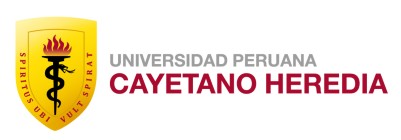
How does UPCH contribute to global public health?
We are regional pioneers in undergraduate and graduate programmes in global health and life sciences, and in research eff orts from basic to applied science in diseases of global relevance. We have designed new rapid diagnostic methods and conducted clinical trials in tuberculosis and other infectious diseases; we have models of cervical cancer prevention based on HPV molecular characterization; developed molecular diagnostics and control strategies based on geographical information systems (GIS) for malaria. We have the only School of Public Health in the country, where we develop research aimed to improve national policies.
What about the impact of climate change on human health?
Peru is a country that will be severely aff ected by global climate change. Glacial melting of the large number of tropical glaciers in our country will reduce water availability during the dry season and impact agriculture and other resources, undermining human health. As a consequence, there is a threat of the spread of emerging vector-borne diseases.
What work do you do with indigenous communities?Through international collaboration and participatory approaches with indigenous populations we work in endemic diseases, creating awareness of the eff ect of climate change on health and on food and water security. We also identify social determinant components that increase resilience to a changing environment by promoting education and health in their proper cultural context.
What neglected infectious diseases are your priority?
Cysticercosis, caused by a tapeworm, is a major burden in poor countries worldwide. Neurocysticercosis can cause epilepsy and other neurological disorders. UPCH hosts the Cysticercosis Working Group in Peru, a multidisciplinary network focused in improving the diagnosis, treatment and management of this parasitic infection. The working group has created and advanced diagnostic and therapeutic approaches to tackle cysticercosis, including defi ning the best serological tests and conducting clinical trials of antiparasitic treatment. The group has published, in the New England Journal of Medicine, the results of a large field programme in an endemic area of northern coastal Peru that showed it is possible to interrupt the transmission of the disease, laying the foundations for future elimination of this parasitic infection in other endemic regions worldwide.
What other diseases are you tackling?
The Alexander von Humboldt Tropical Medicine Institute has research groups on malaria, tuberculosis, leishmaniasis and HIV, as well as neglected diseases such as HTLV-1, fasciolasis and intestinal parasites. We take an integrated approach, with research going from molecular biology, clinical trials to social determinants of health. We are proud to practice and teach tropical medicine in the tropics. The Gorgas Course in Clinical Tropical Medicine, in partnership with the University of Alabama at Birmingham, is one of our most internationally renowned medical courses; that has trained 850 health professionals from more than 85 countries in 23 years. Also we do research in the rising epidemic of non-communicable diseases through CRONICAS, our Centre of Excellence in Chronic Diseases.
What brings international scholars to a university in Peru?
Visiting scholars are attracted by our research facilities, academic excellence, unique geography, and by the biodiversity and culture that favour a multidisciplinary approach to research in health– environment interactions. We participate in international,high impact research initiatives such as the 1000 Genomes Project, the Consortium for the Analysis of the Diversity and Evolution of Latin America, and the Potato Sequencing Consortium. In epidemiology and public health, we are part of the Global Pneumococcal Sequencing Project, the TANDEM Consortium, and the Latin American Research Consortium on the Genetics of Parkinson’s Disease, among others.
What are your aims for the future?
We are the leading academic and research institution in Peru according to rankings such as Scimago and Times Higher Education. We are looking for strategic partnerships and research sponsors. We are determined to make a signifi cant contribution to the knowledge and to solving the most pressing challenges in health of vulnerable populations, not only in the biomedical sciences but across our range of capabilities including education, veterinary sciences and a broad spectrum of life and environmental sciences.


